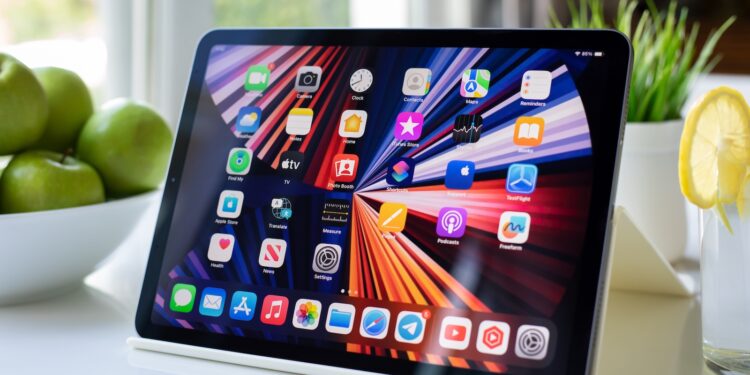iPad sales increased significantly in the first quarter of this year. According to a recent analysis by Canalys, Apple shipped approximately 13.7 million iPads—a 14 percent increase compared to the same quarter last year. The company is thus further expanding its market leadership in the global tablet market. Surprisingly, the main reason for this increase lies in an event that is essentially over long ago: the COVID-19 pandemic.
Five years after the peak of the pandemic, it's clear how strongly this period continues to influence purchasing behavior today. Many people purchased an iPad or other tablet back then—and now, as the devices slowly become obsolete, the major replacement wave is beginning. Especially in the US, this effect is driving a sharp increase in demand for new models. This means that the iPad will reach a new peak in sales in 2025.
iPad shipments increase by 14 percent
Compared to the previous year, Apple increased its iPad shipments from approximately 12 million to 13.7 million units. This corresponds to growth of 14 percent in the first quarter. This also increased Apple's market share in the tablet segment – from 35.5 percent to 37.3 percent. This puts Apple well ahead of all other manufacturers. Samsung, the second-place provider, suffered a decline. The company's market share fell to 18 percent. This means that Apple now has more than twice the market share of its nearest competitor. Other manufacturers currently play a negligible role in this market; none of them currently achieves a double-digit share.
Pandemic as a driver for new purchases
The striking increase in iPad sales is primarily related to the pandemic—or more precisely, to the period afterward. Many people bought a new tablet in 2020, primarily for home office, homeschooling, or personal use. Back then, the iPad was the logical replacement for a notebook for many, or simply a practical device for everyday use at home. Now—five years later—the life cycle of their tablet has come to an end for many users. Tablets are replaced on average every four to five years. This means that 2025 is the right time for many to buy a new iPad. Canalys calls this effect a pandemic-induced refresh of tablet usage. The demand for a new device is high because many of the models purchased back then can no longer keep up with current requirements—be it in terms of speed, battery life, or software compatibility.
Private customers drive the market
It's striking that the increased demand for iPads is primarily coming from private buyers. Companies currently play a minor role in this growth segment. It's primarily ordinary consumers who are now replacing their older iPads and opting for newer, more powerful models. Apple's current iPad lineup offers plenty of incentives for this. New chips like the M3 and M4 processors, improved displays, longer battery life, and modern software features ensure that an upgrade brings noticeable benefits. Those who work extensively with the tablet or use it daily will benefit significantly from a current model.
Outlook: Demand is expected to decline again in 2026
According to Canalys , the surge in demand is expected to continue throughout 2025. However, a slowdown is expected afterward. Tablets are becoming more durable, and spending priorities are shifting. Many consumers are likely to allocate more of their budgets to travel, leisure, or other consumer goods in the future. Nevertheless, Apple is expected to perform well even in a flattening market. The need for high-quality, reliable tablets remains. Demand is particularly stable in the premium segment—that is, for the more expensive iPad models. Therefore, those who consciously choose a high-quality device will continue to choose the iPad over the competition.
2025 will be the upgrade year for the iPad
iPad sales increased significantly in 2025 – primarily because many devices from the pandemic era are now being replaced. Apple is benefiting greatly from this trend and is further expanding its lead in the tablet market. Most buyers are private users who want to upgrade after five years. Even though demand is expected to decline in 2026, the iPad will remain in the top position – primarily due to its strong presence in the premium segment. So, if you're still using an iPad from 2020, 2025 is a sensible time to upgrade. (Image: Shutterstock / DenPhotos)
- iPhone shipments in China collapse: Apple loses market share
- Apple expands India: iPhone exports to the US doubled
- Apple and Trump: How phone calls can save billions





